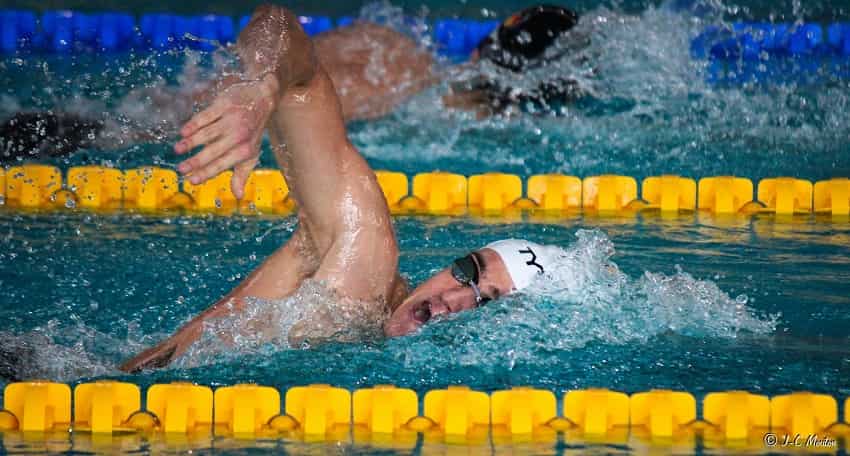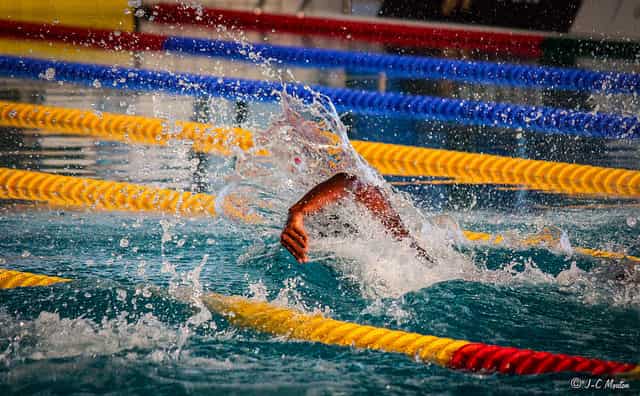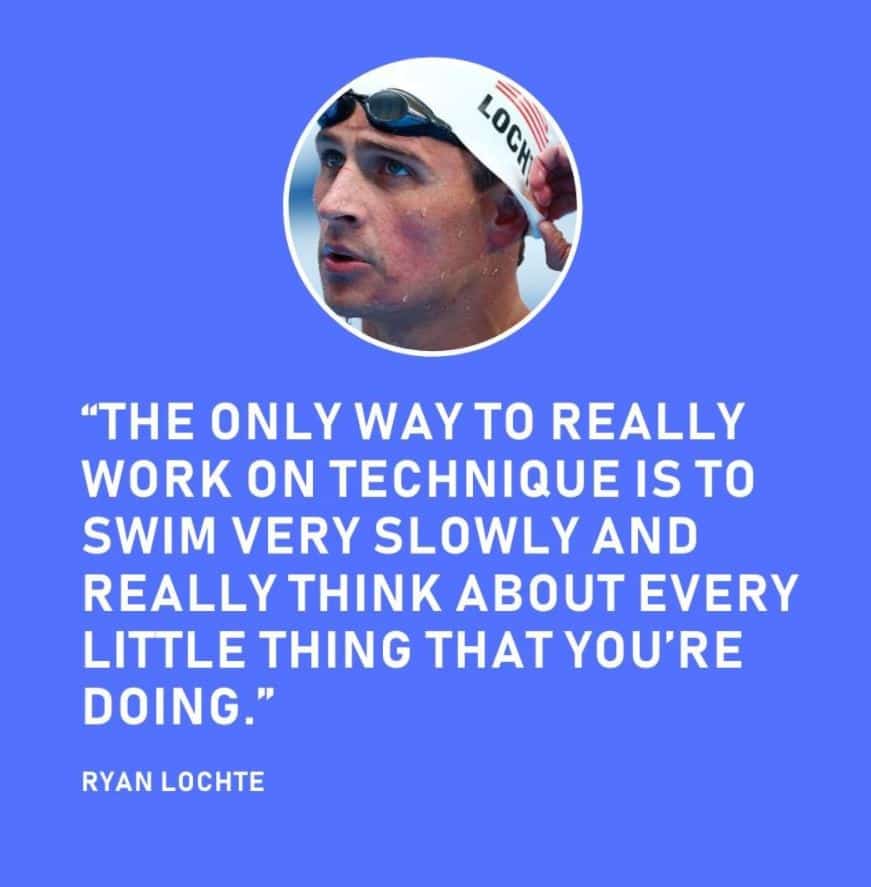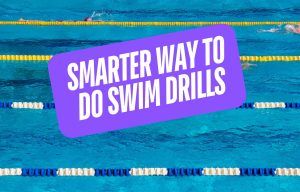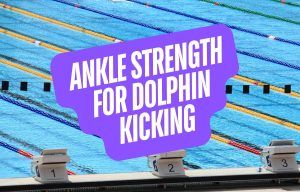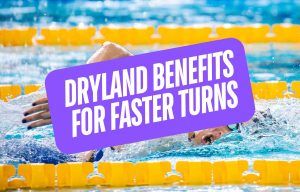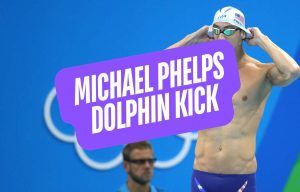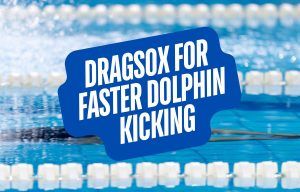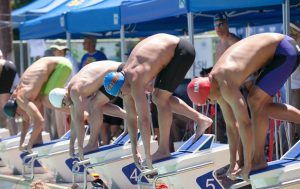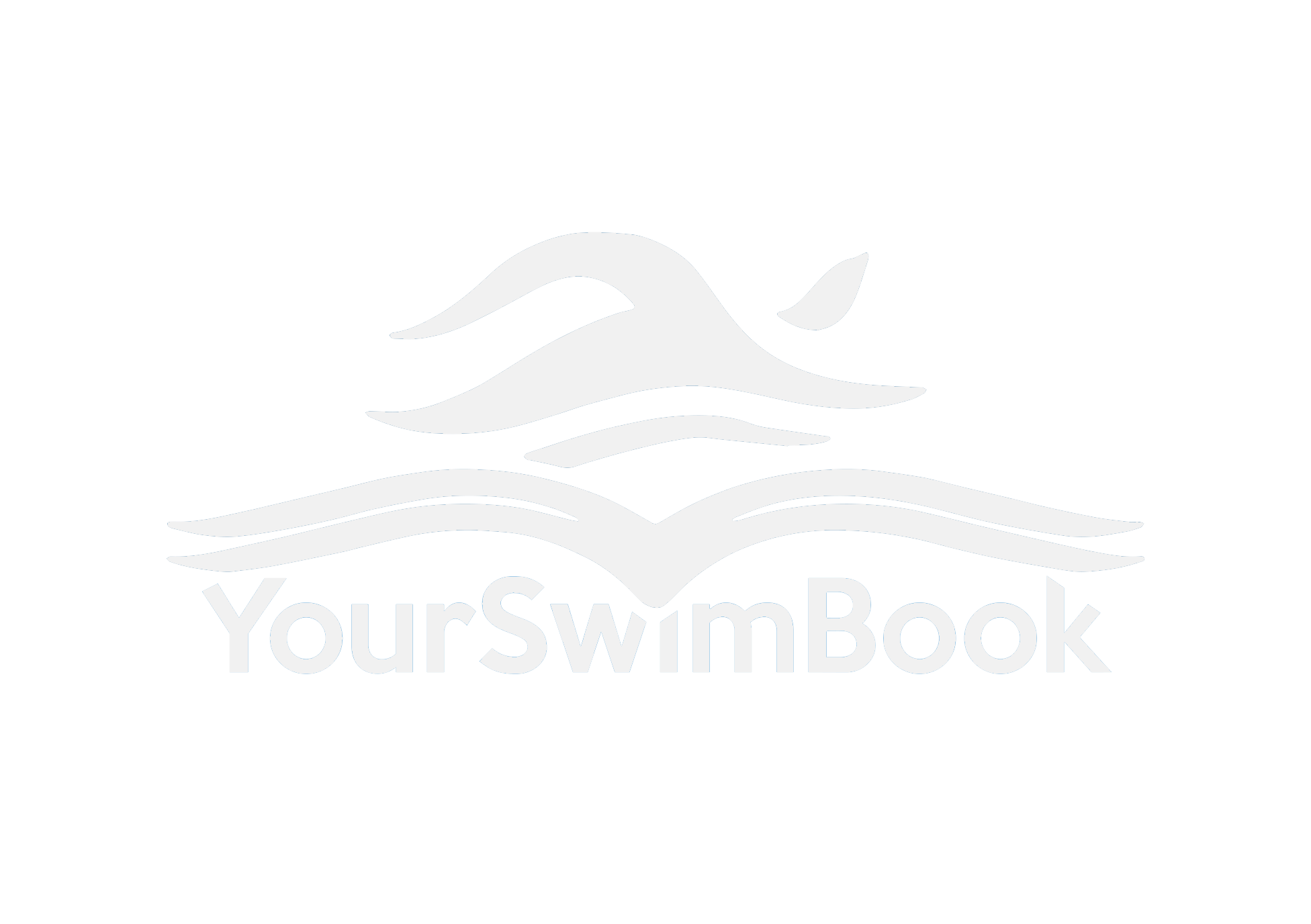Swimming slowly and deliberately can make you a faster, more efficient swimmer.
Tell me if this sounds familiar…
Recently I was having one of those weeks of training where I was pounding out lots of high-intensity meters, but my stroke just didn’t feel that…great.
I was working my way through the sets and workouts, putting in a good effort, but on reflection, my stroke was largely in tatters. The intensity was there, but the “feel for the water” wasn’t.
And as a result, the times I were putting up were, well, mediocre at best.
Towards the end of the week, growing frustrated I put the kibosh on the main set. Instead, I grabbed my pull buoy and did 10×100’s freestyle as slow as I could with fantastic technique.
No intervals. No goal times. The only objective was to swim super slowly and with perfect technique.
What happened next?
Gearing down to idle forced me to think about my hand placement. Kept my high elbow during the beginning of the pull. Keeping my face pointed at the floor of the pool.
Without being gassed and struggling for breath meant that every streamline was super tight. Each push-off was done with full force. And the first couple strokes into the breakout were crisp.
I won’t lie…
It was hard to resist the urge to crank up the intensity. Shockingly hard at times.
But surely, slowly, I could feel my hand catching during the pull. That hard-to-describe feel for the water coming back.
And soon enough, it felt like I was swimming more efficiently than I ever had.
The most specific drill you can do
Super slow swimming looks too easy. And maybe that it is the problem.
Because it looks like we are gliding our way through the water with no effort it’s discounted as worthless.
But when it comes to improving your freestyle stroke, SSS is pound for pound one of the best drills you can do.
After all, there is a lot going on under the water if you are doing this drill correctly:
- If you don’t have an even stroke cycle your body will sink between strokes.
- You have to kick—not too hard, but enough to keep yourself balanced.
- A high elbow catch and quick pull are required. If you are gliding for a few moments at the beginning of the pull you are doing the drill wrong.
- You can really tell where your hand entry is happening, and how to correct it.
- Without being harried you can focus on the high elbow and pulling motion.
Efficient swimmers are fast swimmers
Too often swimmers hop into the water and do the assigned swim practice with the sole intentions of getting it over with or getting their hand on the wall first. Or we get lost in the need to swim fast all of the time, forgetting the fundamentals that got us there in the first place.
This freestyle drill is tough because it combats the instincts you have to want to go fast. It changes the relationship you have with the water and forces you to really focus on the fundamentals of your stroke.
The result is that you mold your technique to the way it should be…
All sorts of efficient.
How to Use Super Slow Swimming in Your Workouts
Okay, so now that you understand some of the benefits of injecting some super slow swimming into your workouts, here’s how to make the most of it:
1. Get immediate feedback.
While we can usually tell where our hand placements and arm pulls are landing it can be difficult to tell for sure when staring at the bottom of the pool.
Partner up with another swimmer in the pool to do some peer coaching. Have your coach review your stroke. Or, if you train solo, invest some dollars into a GoPro with waterproof casing to see what your stroke actually looks like.
Have a quick feedback loop that allows you to catch and correct mistakes early and often.
2. Ditch the intervals.
Focused, purposeful swimming is timeless. Instead of rushing to get to the wall to catch your breath and make the interval do it at your own pace.
Florent Manaudou’s coach, Romain Barnier, implements “free time” into his workouts. These blocks of time are reserved for swimmers to work on the things they want to work on.
Remove the traditional constraints of having an interval. Who cares if it is done super slowly if it is done with a high degree of technical integrity.
3. Avoid the temptation to race your teammates.
I see this all of the time—swimmers assigned to drills during practice only to start cheating through them in order to beat their teammates to the wall.
Bury your competitive instinct for a little while and focus that energy into making your stroke the best it can be.
Staggered starts could be one solution, or separating swimmers altogether.
4. Use it as a tool in your swimming toolbox.
As detailed earlier, I used this drill when I was feeling sluggish in the water. It helped. Big time.
You can deploy this drill before main sets (so that you go into the big set with a good feel for the water), or at the end of the workout as a warm-down (to leave a good last impression in your nervous system of how you should be swimming).
Use it in your warm-up, between rounds of a tough set, and anywhere else you can think of.
5. Use a snorkel.
Throwing a snorkel into your training is a no-brainer, especially for you swimmers who have a brutal catch-up stroke, or who love to keep their eyes focused forward when they swim.
But if you are new to this drill you’ll find that it’s challenging to turn your head and breath without sinking into the water.
Using a snorkel will keep your body and head positioned in that ideal alignment for longer periods of time.
Up Next:
- 10 Drills for Freestylers. Here is a collection of hand-picked drills that will help you achieve a quicker arm recovery, improve your high elbow, and balance out stroke imbalances.
- How to Swim Faster Freestyle. Is your freestyle as efficient as it could be? Here are three areas of your stroke that you can immediately work on to swim faster and with less friction in the water.

